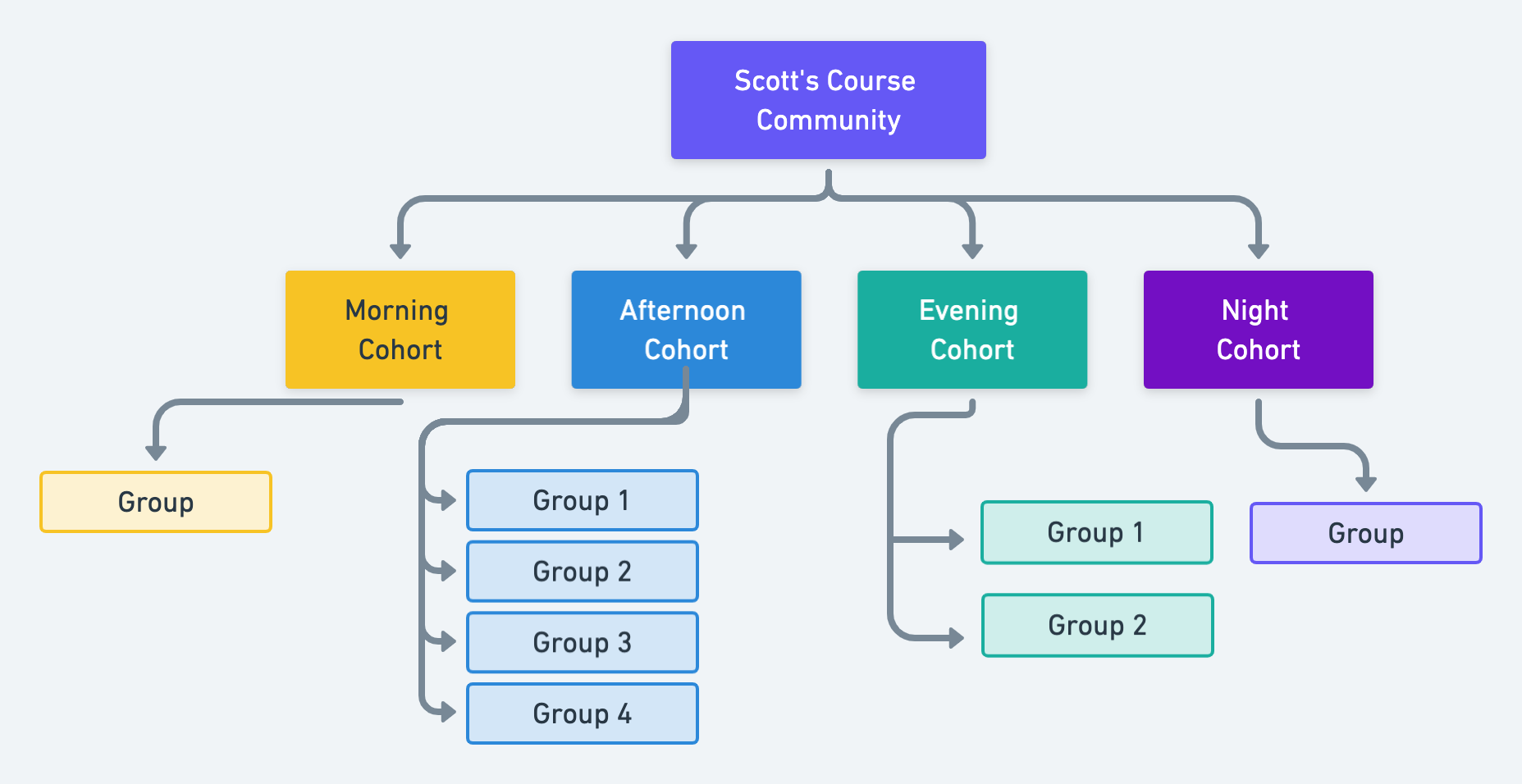Creating Accessible Cohort-Based Courses
Community is essential for successful learning. With an eye on accessibility, more students can take part in cohort-based education.
In the Information Age, accessing information is free. What is hard is building the community that helps students learn, apply, and challenge that information.
Wes Kao powerfully makes this argument in a recent post on Future and shares a solution: cohort-based courses, or CBCs.
CBCs as the Next Phase of Online Education
Over a decade ago, massive online open courses – or MOOCs – became popular. In this format, videos are online for anyone in the world to watch whenever they want (asynchronously would be the buzzword). It democratizes education, but without a group or learning partners, completion rates are abysmal, measured at 3-6%.
Universities have tried to improve the MOOC model with Hy-flex – a popular model used in response to COVID-19. Hy-flex courses allow students the flexibility of attending class in-person or online. The class is synchronous, so it is offered at a specific time, and students are studying alongside classmates.
The experience was mixed at best, based on my experience in the university classroom and talking to other professors. Hy-flex courses try to offer an in-person and online experience. The result is mediocrity at both without the benefits of either. It also meant teachers who wanted engaging courses needed to develop two experiences creating more work. With a mediocre experience in-person and online, most students just stayed home, seeing no benefit to trekking to campus. In the end, most hy-flex classes basically transformed into boring, milk-toast online courses.
CBCs offer the potential to bridge the gap between these two models. CBCs look a lot like a flipped classroom in a traditional institution – asynchronous content before class with a virtual, synchronous class to work together and discuss the topic.
Accessible CBCs
CBCs face the same challenge as traditional classrooms – accessibility. Students have to be available at a specific time.
As I’ve learned teaching college students – this is limiting. Most students have full time jobs, some have their own families they take care of, and other potential students are limited by time zones, language and culture. This problem is magnified with lifelong learning students who balance their own jobs, companies, and lives.
It’s possible to build accessible CBCs that retain the benefits of a CBC while unlocking the accessibility benefits of MOOCs. The answer is a community + cohort + group approach.

Community + Cohort + Group
An accessible CBC has three levels of engagement.
Community
The community is the home for everyone in the CBC, similar to a university that connects students across years, majors, and locations. A community could host multiple courses, similar to On Deck, that all gather together in the community.
The community enables students to support one another across courses and time. Alumni from a university come back and help current students, and the same can happen in an online community. Students in a global course might not be online at the same time during a class, but the community provides a chance for these students to collaborate.
A community manager usually facilitates connection and spark conversation. Tools like Slack and Circle can host communities. The community may also have live events relevant to everyone. While timing makes these “all hands” events less accessible, it does provide a way to build excitement, teach important lessons at a single time, and show the network students are getting with the course.
Cohort
The cohort is the synchronous learning community, similar to a class in a university. The cohort is the peer pressure that encourages students to show up. Often peer supporters run a specific cohort and deliver the content or exercises during cohort meetings. While recordings might be available following the cohort, there is a feeling of FOMO for students who can’t attend.
Cohorts can range widely from 10-100+ attendees. The biggest limiting factor in a cohort is time. Since the cohorts are synchronous, larger CBCs will have multiple cohorts to maximize accessibility. In the case of the altMBA, cohorts were offered around the globe so students anywhere could easily participate. The challenge for smaller CBCs working to increase accessibility is having enough students to offer multiple cohorts.
Just like a university, cohorts provide a chance to chat and see classmates. However, the small group conversations and relationship building will happen during cohort breakout groups or scheduled group meetings.
Group
The group is a small gathering of ideally 3-5 students that work together to apply lessons from the cohort, similar to a study group in a university class. Often these learning groups are self-directed by the students.
Groups could be formed during a cohort session as breakouts, or it could be a group that meets regularly at a time that works for the members. In this more intimate setting, classmates have deeper discussions, build relationships, and apply what they have learned. These connections will help networking within a CBC by providing introductions to other cohort and community members.
Accessible CBCs Build Audience and Ecosystem
In higher education, well-known schools partner around the globe to create new locations. Today we don’t need a billion dollar foundation or large infrastructure investments for global reach. Instead, we grow with a network of talent. Educational institutions build demand with talented and well-known teachers and peer supporters.
Students now follow and learn from individuals online. The rise of the influencer is just as prominent in education as it is in fashion or music. These influential teachers bring a following of potential students to a CBC. Maven’s initial course launch generated over $1 million in revenue in five month, showing the power of bringing an audience to a CBC.
Beyond the superstar teacher is a deep bench of peer supporters. These supporters are often industry experts in their own rights with their own audiences. These experts lead cohorts and market the CBC to their audience. In this way, they are filling the pipeline of potential students.
Accessible CBCs built in this structure also help democratize talent. The fact that cohorts are time-based means cohort leaders are often located around the globe. CBCs elevate these peer supporters, providing them a platform and visibility within the community. With this amplification, these local leader can better develop their local ecosystems and build their online networks.
CBCs on the Global Stage
CBCs may not be an entirely new concept, but they are a new spirit. They offer a way to combine the accessibility of a MOOC with the personal collaboration of an in-person course. However, CBCs must be built with accessibility in mind to truly change how we educate students.
By building with the simple Community + Cohort + Group formula, CBCs are ready for the global stage. There is no need for million dollar investments or splashy PR announcements. Instead, leveraging a network of talented teachers and supporters will create demand.
Information is free, but accessible CBCs will help spread that knowledge and talent globally.
